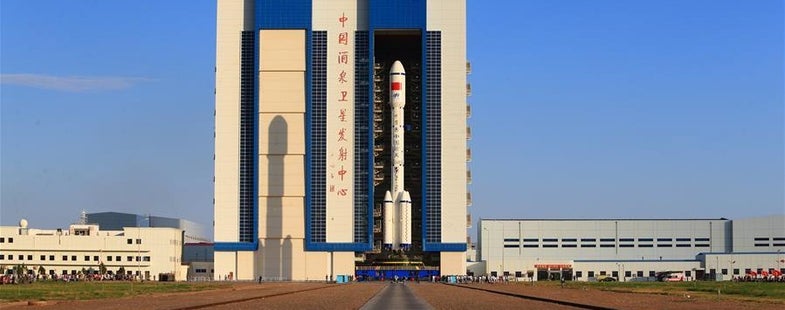China Plans To Launch A Live-In Space Lab Tomorrow
Tiangong-2 will be home to two astronauts for 30 days


In 2011, Congress ruled that China is not allowed on the International Space Station because of “national security” concerns. Undeterred, the People’s Republic decided to build its own.
Tiangong-1, which launched in 2011, was the first step in that direction. The unmanned prototype served as a practice for docking spacecraft, and played host to a short manned mission. Now China’s ready for part 2: sending astronauts to live in space for the longer term.

Tiangong-2 will launch from China’s Gobi Desert at 10:04 p.m. local time on Thursday. A Long March 2F rocket will carry it into orbit 244 miles above the Earth. Then, in October, a crew of two astronauts will travel to the 34-foot-long lab and live there for 30 days.
There, they’ll perform “[e]xperiments related to medicine, physics and biology, such as quantum key transmission, space atomic clocks and solar storm research,” Chinese news agency Xinhua reports.
A third module, Tiangong-3, is expected to launch in the coming years. Its design will inform China’s large modular space station, a more permanent installation expected in the 2020s.

Tiangong 3